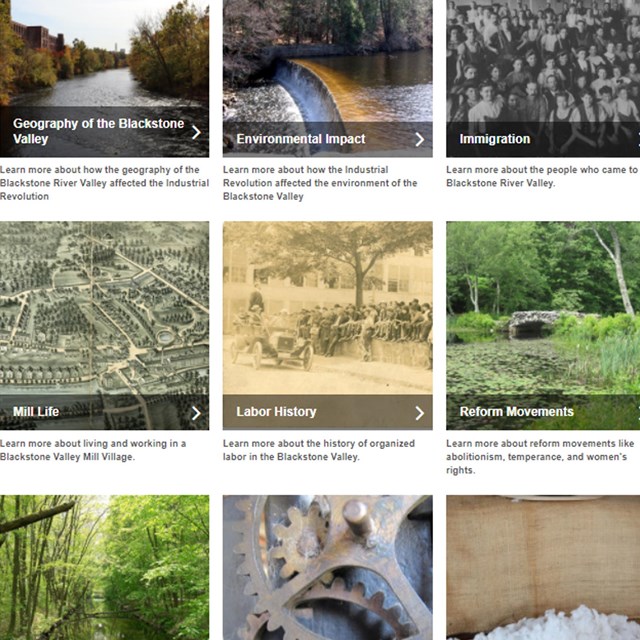
At first glance, the Blackstone River seems completely ordinary. It is not very long or very wide. But along the banks of the Blackstone, the American Industrial Revolution was born, and the Blackstone became known as America’s “hardest working river.” The Blackstone was formed about 10,000 years ago during the last Ice Age. A massive glacier slowly made a U-shaped valley with a flat bottom and steep walls. As it melted, the glacier became the first waters of the Blackstone River. 
The Blackstone travels about 48 miles from its headwaters in Worcester, MA, to the Pawtucket Falls in Pawtucket, RI. During the Blackstone’s journey it drops 438 feet, about 9 ½ feet every mile. The river’s steady drop made it a great source for waterpower. Dams were built across the river to squeeze that drop into a waterfall at a single point. Water was taken out of the river just above the dams and run into the mills. In the mills, the weight of the water dropping over waterwheels provided the power to run the mills. The dams also created ponds or reservoirs that gave the mills a supply of water all year long. 
By the mid-1800s, the Blackstone River and its tributaries were home to over one hundred mills and mill villages, making it one of the busiest industrial areas in the United States. But industrialization caused problems. Pollution flooded the river, especially heavy metals that kept dye from washing out of cloth. These heavy metals sank into the river bottom and are still a source of pollution in the river today. The river also became a dumping ground for trash. By the 1960s, the Blackstone was one of the most polluted rivers in the United States. However, the local people did not stand by and let their river be a sewer. A grassroots group, later named ZAP!, worked hard to stop further pollution of the river and to remove the garbage that others had dumped. Their work paid off, and the river’s health keeps getting better. The Blackstone River is now home to more than twenty species of fish and aquatic mammals like beavers and river otters. Snapping turtles and a variety of birds have also returned. Once America’s hardest working river, today the Blackstone is a place of recreation, reflection, and renewal. People, Places and Stories
|
Last updated: July 17, 2021



